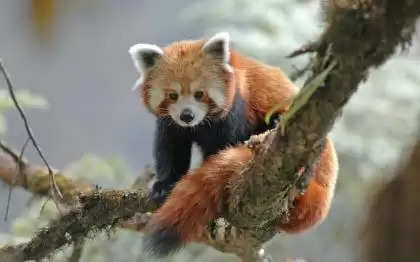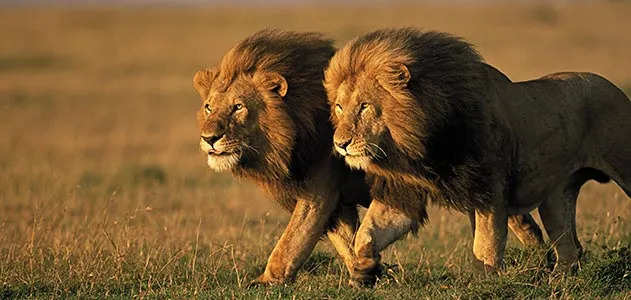15 Animals You Cannot Legally Own as Pets in India
Many species protected by the Wildlife Protection Act, which forbids their domestication
India, characterized by its dynamic culture and diverse ecosystems, supports a wide variety of native animal species.India hosts a diverse and abundant array of wildlife, with many species protected by the Wildlife Protection Act, which forbids their domestication.The Act organizes animals into various Schedules depending on their conservation status, and penalties for infractions are adjusted accordingly.
1. Indian Pangolin

Image Credit Rajaji National Park
Pangolins, also called scaly anteaters, are unique mammals with large keratin scales covering their bodies. They have no teeth and are mainly active at night, rolling into a tight ball when they feel threatened.
2. Red Sand Boa

Image Credit IAS Gyan
The Red Sand Boa, scientifically known as Eryx johnii and commonly called the Indian Sand Boa, is a non-venomous species that inhabits the arid regions of the Indian subcontinent. The snake has a mainly reddish-brown and sturdy build, typically reaching about 75 cm in length. What sets it apart from other snakes is its tail, which is nearly as thick as its body, creating a unique "double-headed" appearance.
3. Parakeets

Image Credit BeChewy
Despite their appealing colors and charm, parakeets confront captivity challenges stemming from unregulated trade and domestic ownership, which endanger their wild populations.

Image Credit Round Glass Sustain
Because of their distinct physical traits and substantial size, Monitor lizards may unsettle people, but they pose no real danger. Ironically, humans have caused more harm to these reptiles.
5. Sea Turtles

Image Credit BBC
Sea turtles are large reptiles that breathe air and are found in tropical and subtropical oceans around the world. Sea turtles have shells consisting of an upper part called the carapace and a lower section known as the plastron. These shells are covered with hard scales, called scutes, which vary in number and arrangement and can be used to distinguish between species, except for the leatherback turtle.
6. Indian Star Tortoise

Image Credit Pro-Meal Insect Feeds
The Indian star tortoise is a tortoise species that is at risk of extinction. The appealing patterns on its shell not only enhance its beauty but also aid the tortoise in camouflaging with its surroundings. These patterns break up the shell's outline, making the tortoise less conspicuous to passing predators while it grazes.
7. Bengal Tiger

Image Credit Tiger
The tiger, being the largest member of the cat family, has the Bengal tiger as one of its five remaining subspecies. It is illegal to hunt tigers or trade products made from any part of them. These tigers usually feature yellow to light orange fur with brown to black stripes, while their bellies and the inner sides of their limbs are white.
8. Red Panda

Image Credit One Earth
The red panda is slightly larger than an average domestic cat, with a body shape resembling a bear and thick, reddish-brown fur. Its belly and limbs are black, and it has white markings on the sides of its head and above its small eyes. Red pandas are known for their agility and acrobatic skills, often preferring to inhabit trees. They rely on their long, bushy tails for balance and also wrap themselves with it in winter, potentially to stay warm.
9.Crocodiles
Image Credit Live Science
Crocodilians are sizable reptiles resembling lizards, characterized by four short legs and a lengthy, muscular tail. Their skin is rough and covered in scales. Crocodilians are vital for ecosystem health. For example, Nile crocodiles (Crocodylus niloticus) contribute to controlling the population of barbel catfish.The extinction of crocodiles could lead to catfish threatening the food sources of more than 40 species of birds by endangering other fish populations.
10.Peacocks

Image Credit Britannica kids
Peacocks are large, vibrant pheasants with colorful plumage, commonly displaying shades of blue and green, and are known for their dazzling tails. These tail feathers, known as coverts, form a distinctive display that extends over 60 percent of the bird's total body length, featuring colorful "eye" patterns in shades like blue, gold, red, and others.
11. Hill Myna

Image credit Wikipedia
The Common hill myna is a strong, shiny black bird with conspicuous patches of orange-yellow bare skin and fleshy wattles on its head and nape. The bird's plumage is predominantly shiny black with a greenish tint, accented by purple on its head and neck. It displays prominent white patches on its wings visible during flight but concealed when perched. Its bill and sturdy legs are vibrant yellow, and it features yellow wattles under the eye and on the nape.
12. Lions

Image Credit smithsonian Magazine
Due to their large size, strength, and hunting abilities, lions are grouped with other "big cats" such as tigers, cheetahs, leopards, jaguars, and cougars.Lions possess strong, muscular bodies and powerful forelegs, teeth, and jaws that allow them to effectively capture and kill prey. They are typically absent from equatorial regions dominated by dense tropical forests.
13. Indian Elephant

Image credit Animalia
Indian elephants are noted for their intelligence and social behaviors, requiring large spaces to roam. They are essential to their ecosystems, and captivity greatly harms their physical and mental health.
14.Himalayan Monals

Image Credit Reddit
Himalayan Monals can dig up to 25cm beneath the ground to search for food, using their strong claws and beaks to hunt for insects, roots, and seeds.The natural habitat of the Himalayan Monal spans from eastern Afghanistan through the Himalayas into China, encompassing Pakistan, India, Bhutan, Nepal, and Myanmar.
15. Leopard

Image Credit Twinkl
The leopard is proficient at descending from trees on its own, as it is quite comfortable in tree canopies. It frequently hunts prey from this high vantage point and sometimes brings its kills up into the branches. They are distributed across sub-Saharan Africa, northeast Africa, Central Asia, India, and China. However, many of their populations are threatened, particularly those outside of Africa.
To join us on Facebook Click Here and Subscribe to UdaipurTimes Broadcast channels on GoogleNews | Telegram | Signal



